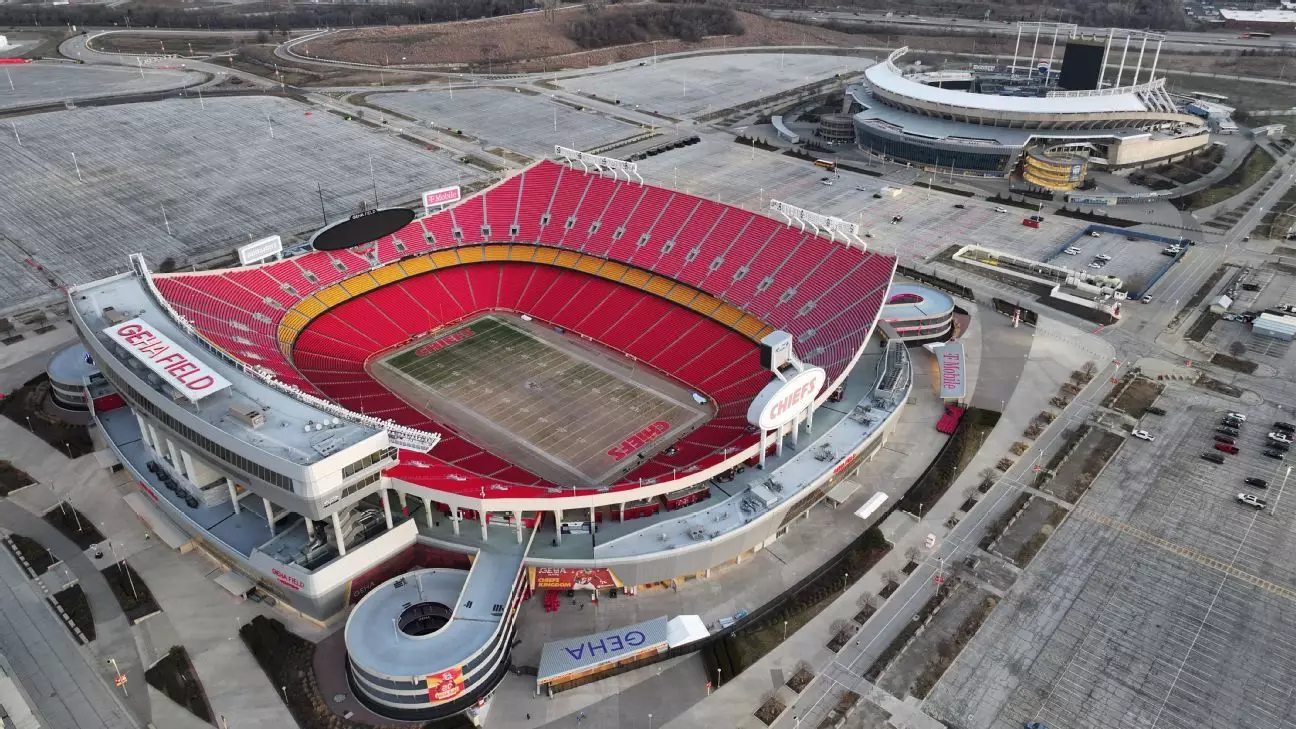In an urgent legislative session, Missouri senators have unveiled a multifaceted plan worth over $100 million aimed at revitalizing tornado-laden St. Louis while concurrently extending financial incentives to retain the Kansas City Chiefs and Royals in the state. This daring strategy comes in a climate of fierce competition, where Missouri must entice its beloved teams to stay amid emerging offers from Kansas. The dual objectives highlight a contentious balancing act: addressing immediate disaster recovery needs against long-term economic aspirations via sports funding.
The tornadoes that slammed St. Louis in mid-May inflicted catastrophic damage amounting to approximately $1.6 billion, leaving the city grappling for urgent relief. Yet, the Chief’s and Royal’s imminent deadline to secure a financing pact with Kansas infuses an explosive urgency into legislative agendas. Missouri’s ambitious push for recovery speaks volumes about its commitment to supporting its residents but risks being overshadowed by a heavy focus on affluent sports franchises.
Financial Dynamics Unearthed
The latest legislative maneuvers, driven forward in the early hours, effectively demonstrate the nuanced interplay between politics and public funding in the realm of professional sports. Republican Governor Mike Kehoe’s negotiations, particularly with those initially reluctant about the proposed aid package, signal a significant political compromise. The deal now encompasses additional disaster relief and potential property tax breaks aimed at homeowners facing soaring bills. This presents an opportunity to cushion the financial impact of disaster recovery on average citizens.
However, within this framework lies an unsettling dependency on public finances for entertainment ventures. Critics, such as Patrick Tuohey of the Show-Me Institute, argue that funneling taxpayer money into stadium projects primarily benefits wealthy team owners and diverts resources from essential public services. They claim that the promise of economic growth through sports facilities is misleading, as funds are often redirected from other vital sectors—leading to a questionable return on investment.
The Economic Argument for Stadium Financing
Chiefs lobbyist Rich AuBuchon painted a hopeful picture during his testimony, emphasizing that renovating Arrowhead Stadium could be part of a larger growth strategy, projected to inject approximately $1.15 billion into the local economy. He argued that states across the country are funding large, publicly financed sports facilities, asserting that such investments significantly contribute to economic development. Historically, new stadiums are viewed as catalysts for business growth, tourism, and community engagement.
Yet, while AuBuchon’s assertions resonate with proponents of sports infrastructure investment, they must be met with rigorous scrutiny. The debate over the real economic benefits from these projects rages on, with economists often arguing against them. They caution that while they may generate some direct income, the figures are hardly convincing when weighed against the public funds expended.
Public Sentiment and the Local Reality
The sentiments of everyday citizens, especially those affected by the recent tornado, must be front and center in this dialogue. For many, the immediate need for support and infrastructure to rebuild their lives far outweighs the allure of a shiny new stadium. Instead of prioritizing affluent teams’ desires over constituents’ needs, lawmakers should demonstrate a heartfelt commitment to their communities.
As seen in previous public funding decisions, the tendency to prioritize sports teams can often lead to disenfranchisement among the very residents who help sustain these economies. The support for the Chiefs and Royals should not come at the cost of putting essential services and public safety at stake.
Finding Common Ground
While Missouri continues to navigate these turbulent waters, a potential compromise could involve creating economic incentives for both disaster recovery and sports funding, ensuring that ongoing assistance for residents is not sacrificed at the altar of stadium deals. Legislative efforts could channel resources towards neighborhood improvements, community development projects, and infrastructure rebuilding, thereby offering a comprehensive approach that benefits all.
The onus lies on Missouri lawmakers to assess their priorities critically. The challenge ahead is to craft a visionary plan that acknowledges the importance of sports within the cultural fabric of Missouri without compromising the well-being of its citizens—a daunting task, yet essential for a holistic approach to economic renewal and community resilience.

